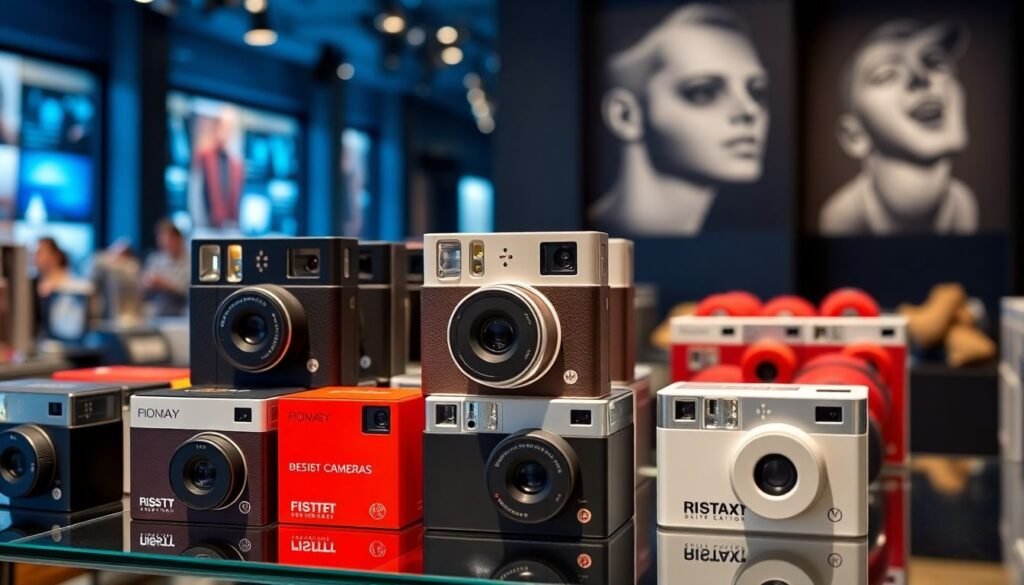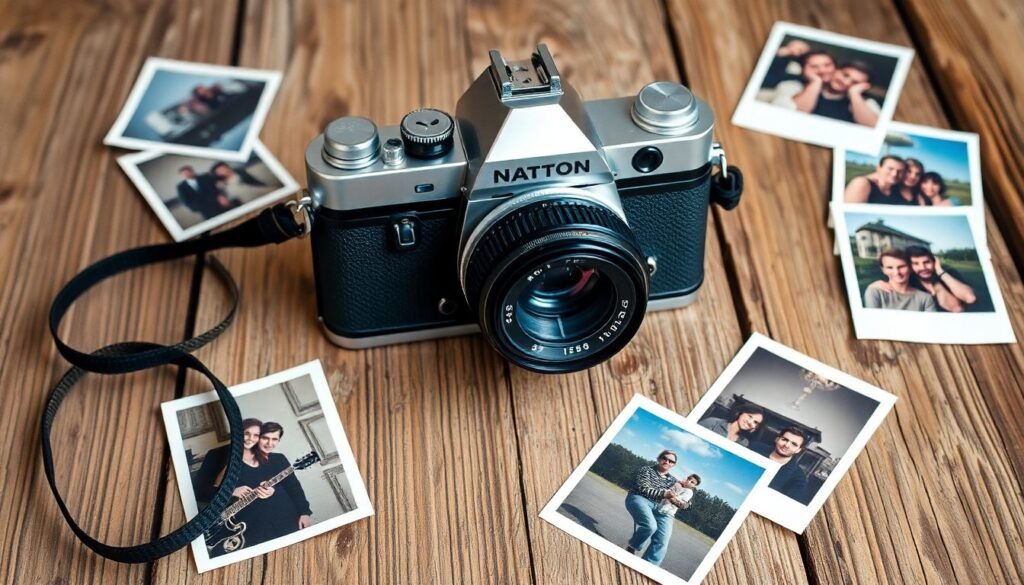Physical Address
304 North Cardinal St.
Dorchester Center, MA 02124
Physical Address
304 North Cardinal St.
Dorchester Center, MA 02124

Disposable cameras, once the go-to gadget for casual photography, hold a special place in the history of modern photography. They were an inexpensive and easy-to-use alternative to traditional cameras, providing everyday people with a convenient way to capture memories. In this article, we’ll dive deep into the evolution of disposable cameras, tracing their journey from a revolutionary invention to a nostalgic icon in today’s digital world.
The first disposable camera was introduced in the 1980s, marking a pivotal shift in the accessibility of photography. Before then, photography was primarily for those who could afford expensive cameras and film. Enter the disposable camera: a simple, pre-loaded, and cost-effective solution for anyone who wanted to snap photos without the technical complexities.

Kodak played a significant role in popularizing disposable cameras, launching its own version in 1987 known as the “Kodak Fling.” Kodak’s mission was simple: to democratize photography by making it possible for anyone to capture memories without worrying about reloading film, maintaining a camera, or understanding the intricacies of photography.
The disposable camera’s design aimed to simplify photography. Whether you were at a birthday party, a vacation spot, or a wedding, the disposable camera was there to capture moments that might have otherwise gone undocumented. Its invention revolutionized personal photography, putting it within the grasp of people who never considered themselves photographers.

In 1986, Fuji introduced the QuickSnap, which would go on to become a global sensation. It was the first truly mass-market disposable camera, and its affordability and accessibility made it a household name. The QuickSnap was soon followed by variations like waterproof models and cameras with built-in flash, allowing users to take photos in a wider range of settings.
The waterproof disposable camera was a revelation for adventurous photographers. Suddenly, snorkeling trips, pool parties, and rainy-day events could all be captured with ease. This expanded the use of disposable cameras beyond simple land-based events to include underwater fun.
One of the more unexpected uses of disposable cameras was their rise in popularity at weddings. By placing disposable cameras on reception tables, guests could capture candid moments, offering a unique perspective on the event. This trend brought disposable cameras into the spotlight as a tool for spontaneous, user-generated content at large gatherings.

The 1990s and early 2000s were the golden years for disposable cameras. They were found at every family vacation, birthday party, and graduation. The simplicity of using one—and not worrying about developing the photos until after the event—made disposable cameras a staple in many households.
Disposable cameras gave rise to the everyday photographer. No longer was photography limited to hobbyists or professionals. Disposable cameras made it possible for anyone, regardless of skill level, to document their lives without the intimidation of complex settings or expensive equipment.
As digital photography took over, disposable cameras began to fall out of favor. However, the cultural impact they had on people’s lives was undeniable. For many, these cameras evoke a deep sense of nostalgia, reminding them of simpler times when photos were cherished, printed, and placed in albums or frames.

Disposable cameras were preloaded with film—typically 24 or 27 exposures—and had a simple mechanical mechanism to advance the film after each shot. Users would take pictures without worrying about settings, as the camera was optimized for point-and-shoot convenience.
While disposable cameras offered ease of use, they came with limitations such as lower image quality, a limited number of shots, and a single-use design. On the plus side, they were lightweight, affordable, and did not require any knowledge of photography to operate effectively.
From the standard QuickSnap model to specialized versions like waterproof cameras, there were numerous variations available. Some even offered features like a built-in flash, varying ISO levels, and different film speeds to adapt to different lighting conditions.

Disposable cameras have left an indelible mark on pop culture. From iconic movie scenes where characters are seen snapping shots to musicians using them for album covers or behind-the-scenes tour moments, the cameras became a part of the creative world.
In recent years, disposable cameras have experienced a resurgence, with younger generations embracing their retro appeal. The tactile experience of shooting film, waiting for it to develop, and the unpredictability of the results have drawn in people seeking a break from the digital age.
Ironically, social media has contributed to the comeback of disposable cameras. Influencers and celebrities have popularized the grainy, imperfect aesthetic that comes with film photography. Instagram accounts dedicated to film photography have garnered massive followings, reigniting interest in analog methods.

As digital cameras became more affordable and smartphones began to include high-quality cameras, the demand for disposable cameras plummeted. The convenience of being able to take endless photos and see the results instantly made digital photography the new norm.
The rise of digital photography allowed for unprecedented creative freedom. You could take hundreds of photos, edit them instantly, and share them with the world. While this meant the decline of disposable cameras, it opened up new opportunities for innovation in the photography space.
By the mid-2000s, sales of disposable cameras had drastically declined. The convenience and instant gratification of digital photography, coupled with the rise of smartphones, made disposable cameras seem obsolete.

Surprisingly, disposable cameras are making a comeback, particularly among millennials and Gen Z. For many, it’s about the experience of shooting film—the excitement of not knowing exactly how the photos will turn out, combined with the tangible nature of printed photos.
In response to renewed interest, some companies have begun releasing limited edition or collaboration models of disposable cameras. These include special designs, higher-quality lenses, and even eco-friendly versions, aimed at a new generation of analog enthusiasts.
As awareness of environmental issues grows, manufacturers are exploring ways to make disposable cameras more eco-friendly. This includes using recyclable materials, creating reusable versions, and offering more sustainable options for film development.

Vintage disposable cameras are becoming collectibles, with certain models fetching high prices online. For collectors, it’s not just about functionality but the history and nostalgia attached to these cameras.
The value of a vintage disposable camera can depend on factors like rarity, condition, and whether it’s still functional. Limited edition models or those associated with significant events or eras tend to be the most valuable.
Online marketplaces, estate sales, and antique shops are often the best places to find rare or vintage disposable cameras. Some collectors also trade models through dedicated photography communities.

The future of disposable cameras may lie in sustainability. Companies are focusing on creating more environmentally friendly designs that can be reused or recycled, which may attract a new wave of environmentally conscious consumers.
Brands are starting to collaborate with fashion labels, influencers, and celebrities to create trendy, limited-edition disposable cameras. These collaborations add an element of exclusivity and style, blending the old-school charm with modern appeal.

While disposable cameras will never replace digital photography, they offer a niche experience that resonates with certain demographics. As long as there are people seeking the tactile, unpredictable joy of film, disposable cameras will have their place in the photography world.
The journey of disposable cameras, from their 1980s invention to their resurgence in today’s digital age, is a testament to their cultural and emotional impact. Though no longer the dominant player in photography, their simplicity, nostalgia, and charm have allowed them to evolve from a tool into an icon. Whether as a collectible or a fun throwback, disposable cameras continue to capture imaginations and moments in ways that digital can’t replicate.

Disposable cameras became popular due to their simplicity, affordability, and accessibility, making photography available to everyone without the need for expensive equipment or technical knowledge.
Yes, disposable cameras are still being produced, and they’ve experienced a resurgence in popularity, especially among younger generations who appreciate their retro appeal.
To develop film from a disposable camera, you need to take it to a photo lab or use a mail-in film development service, where they’ll process the film and provide printed photos or digital scans.
Most disposable cameras are designed for one-time use, but some models can be partially recycled. Newer, eco-friendly designs are aiming to be more sustainable, with reusable features or recyclable materials.
Disposable cameras are becoming trendy again due to their nostalgic appeal, the tactile experience of film, and the unique aesthetic of analog photos, which contrast with the perfection of digital photography.